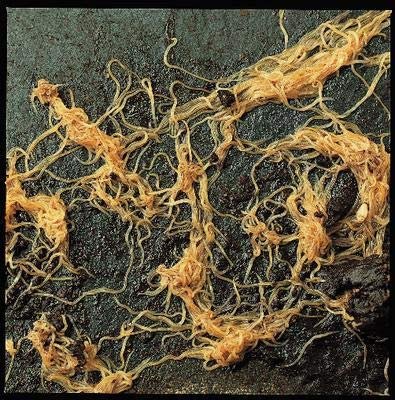
Imagine you’re at a farmer’s market, checking out all sorts of fresh produce, each with its unique flavor and benefits. Some vegetables may have a slight edge in taste or nutrition, but others might be better suited for your specific dish or diet. That’s the same with grindal worms and other worm species like white worms or black worms. Each has its benefits, challenges, and ideal uses. Let’s dive into this comparison to see what sets grindal worms apart from the rest.
What Are Grindal Worms?
Grindal worms, also known as *Enchytraeus buchholzi*, are small, white worms that thrive in moist environments. They typically grow to about 1-3 inches long and are easy to culture at home, making them a favorite choice for hobbyists. These worms are an excellent source of protein and fat, perfect for feeding aquatic pets like fish or even reptiles and amphibians.
These little guys live in the substrate of various habitats, often found in decaying organic matter like compost or soil. You might be wondering why they’re such a hit among aquarium enthusiasts. Honestly, they’re super easy to maintain, reproduce quickly, and provide a nutritious snack for your pets without the hassle of dealing with larger worms.
To culture grindal worms, all you need is a container with some damp substrate, like potting soil, and a little organic matter, like vegetable scraps. You’ll quickly have a continuous supply of food for your pets, which can make a big difference in their health and happiness.
Other Worm Species in Similar Habitats
Now that we’ve got a grip on what grindal worms are, let’s explore other worm species that share their habitat. The primary competitors include white worms (*Lumbriculus variegatus*), black worms (*Lumbriculus variegatus*), and microworms.
Each of these worms has its unique characteristics and benefits. White worms, for example, can grow slightly larger and are also rich in protein. Black worms, while a bit more sensitive to handling, are another excellent high-protein alternative. Microworms, on the other hand, are tiny and perfect for feeding smaller fish or fry.
Remember, while each type of worm might look similar and occupy overlapping habitats, they can offer varying levels of nutrients, breeding rates, and ease of care.
Comparing Nutritional Value
When selecting the right worm for your pets, nutrition is key. Grindal worms are packed with protein and fats, contributing to a balanced diet for fish and other animals. Here’s a quick breakdown of their nutritional value compared to other worm species:
| Worm Type | Protein (%) | Fat (%) |
| Grindal Worms | 60 | 10 |
| White Worms | 65 | 15 |
| Black Worms | 70 | 5 |
| Microworms | 50 | 8 |
As you can see, black worms might edge out in terms of protein content, but every type of worm has its particular merits. It’s essential to consider not just the nutritional profile but also how they fit into your pets’ eating habits. For instance, if you have very young fish, they might struggle with larger offerings like black worms. Grindal worms, being slightly bigger but softer, could be a better fit.
Ease of Culturing
If you’re planning to keep these worms at home, knowing how easy they are to culture is crucial. Grindal worms win here for a couple of reasons. First off, they’re quite forgiving of care mistakes. Let’s break it down:
– Grindal Worms: They thrive in simple setups with little maintenance. Just keep the substrate moist and feed them regularly. They multiply quickly, giving you a steady supply.
– White Worms: Their care is similar, but they require a slightly more controlled environment to thrive.
– Black Worms: These are a bit fussier. They need cooler water and can die off if conditions fluctuate.
– Microworms: They reproduce rapidly but can easily dry out if you’re not careful.
For those new to culturing worms, starting with grindal worms could set you up for success without the anxiety of managing more sensitive species.
Feeding Preferences of Pets
Another factor to consider when comparing these worms is your pets’ preferences. Some fish might aggressively chase moving food, while others might prefer slower, wiggling morsels. Grindal worms are soft and pliable, making them easy for fish to consume without much effort.
Here’s a quick overview of how your pets might react to different worms:
- Grindal Worms
- White Worms
- Black Worms
- Microworms
: Fish that like to graze will enjoy these, as they wiggle gently in the water. They’re easy to consume and digest.
: A bit tougher, they’re great for larger fish but might be avoided by smaller species.
: Their speed can make them exciting for predatory fish but daunting for smaller tank mates.
: Perfect for fry and smaller species, they’re often more accessible for delicate eaters.
Ultimately, knowing what your pets prefer in terms of texture and movement can help you choose the best worm option.
So, which worm should you choose for your aquarium? Here’s the thing: it really depends on your pets’ needs and your comfort level in culturing worms. Grindal worms are a fantastic starter option due to their easy culture, high nutritional value, and soft texture, making them a hit among various fish species. But if you want to explore other options, white worms and black worms can provide additional benefits, especially for larger fish.
In the end, it’s about knowing your pets and what works best for you. Whichever worm you choose, you’ll be making a great choice to provide your aquatic friends with a healthy and varied diet. Happy fish keeping!
